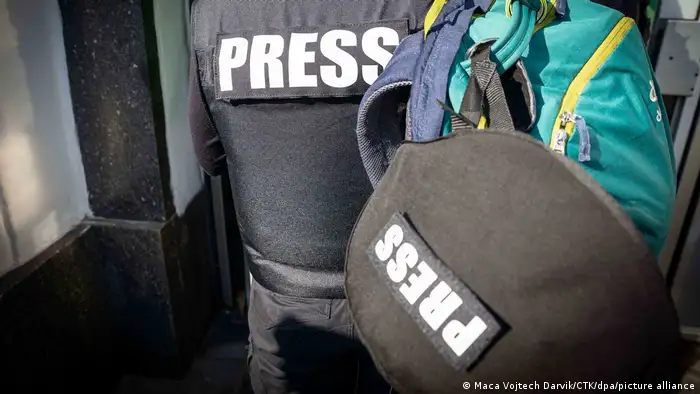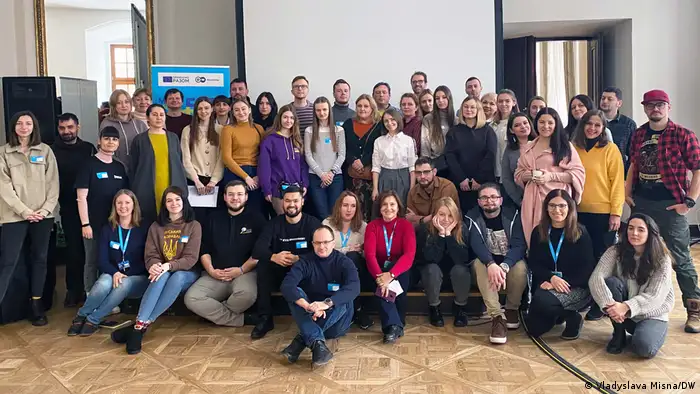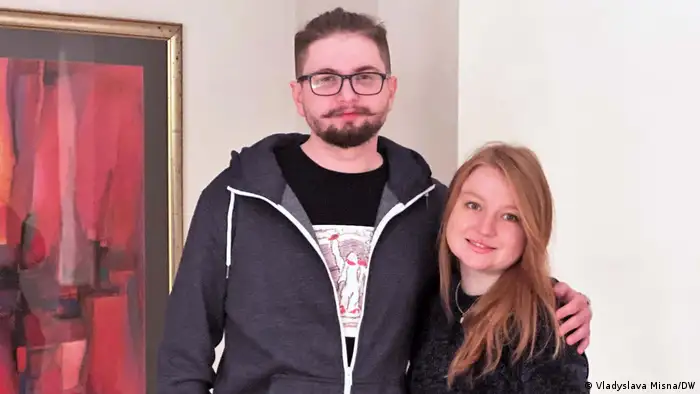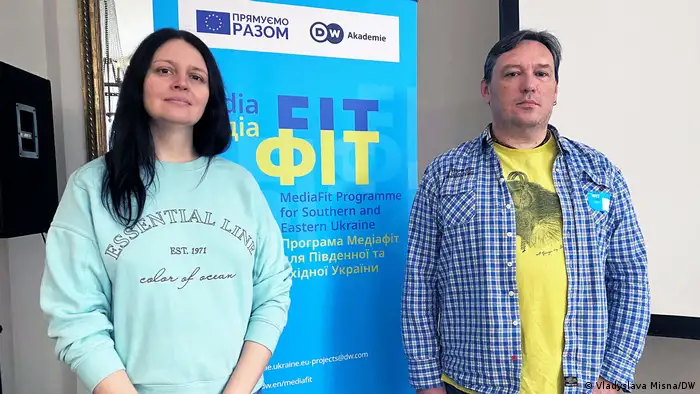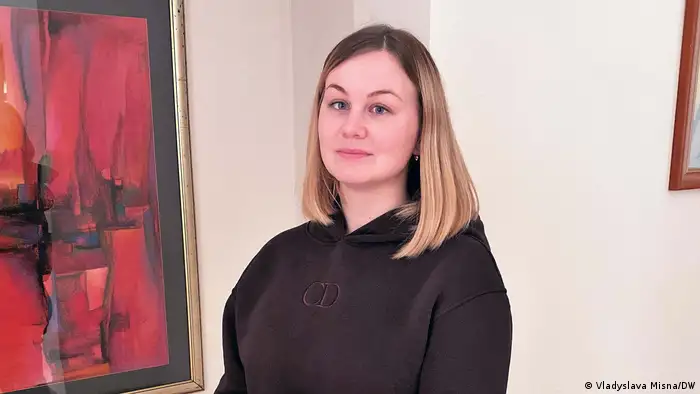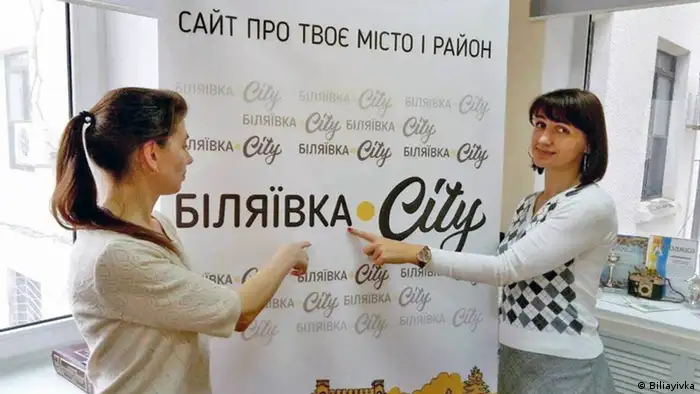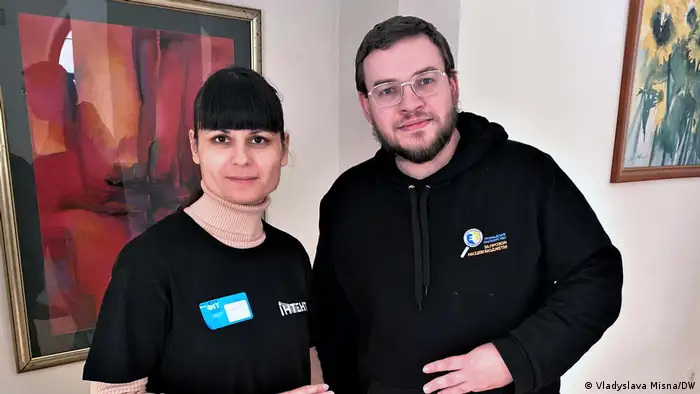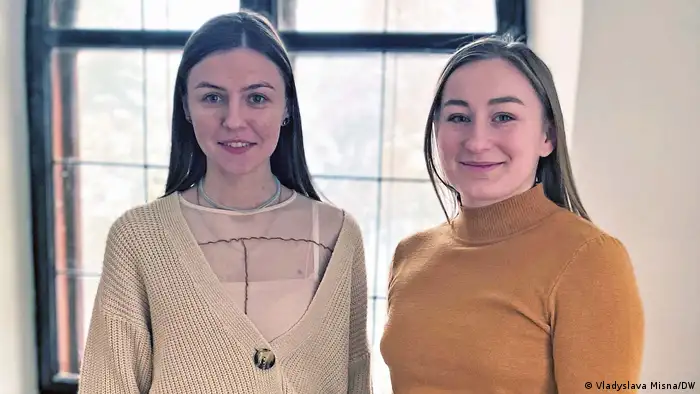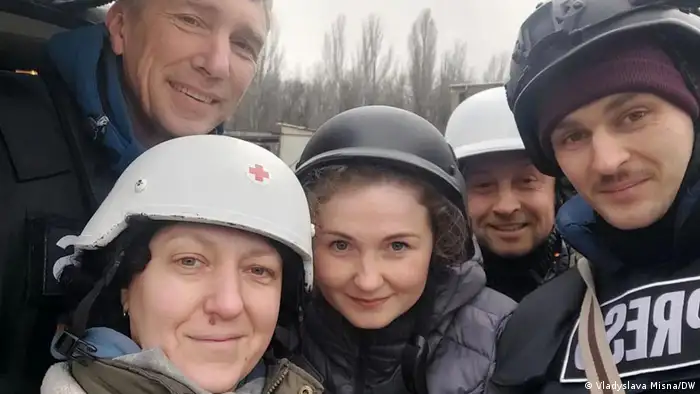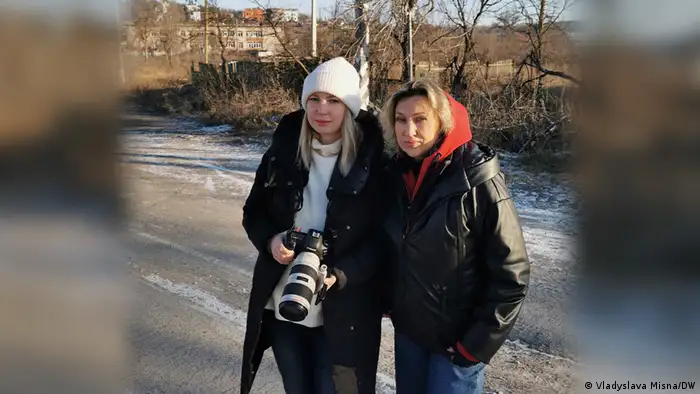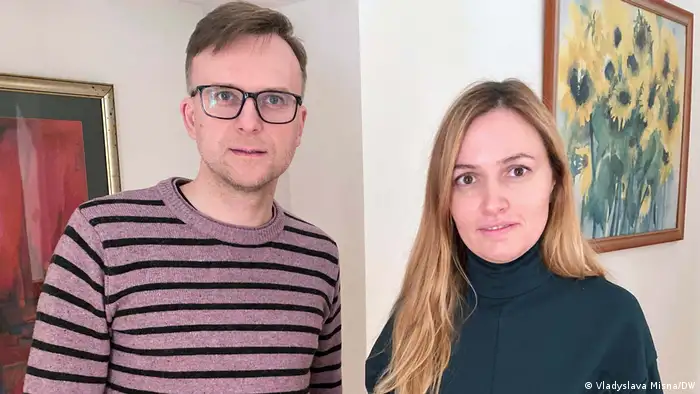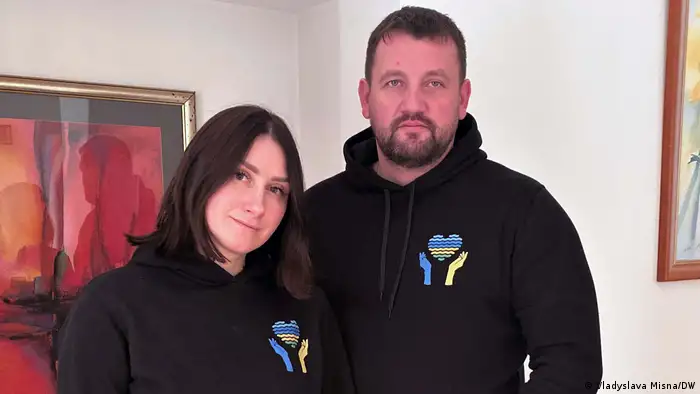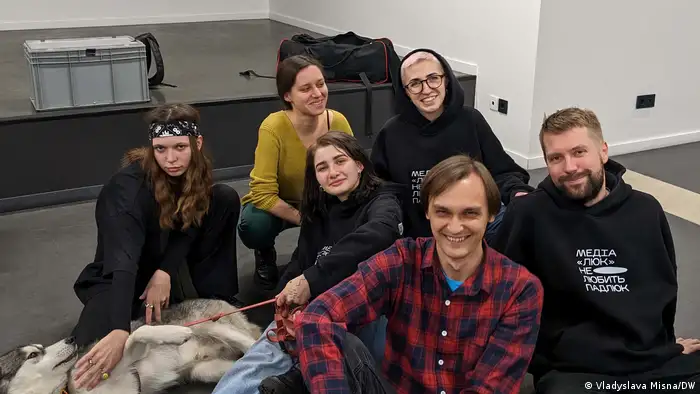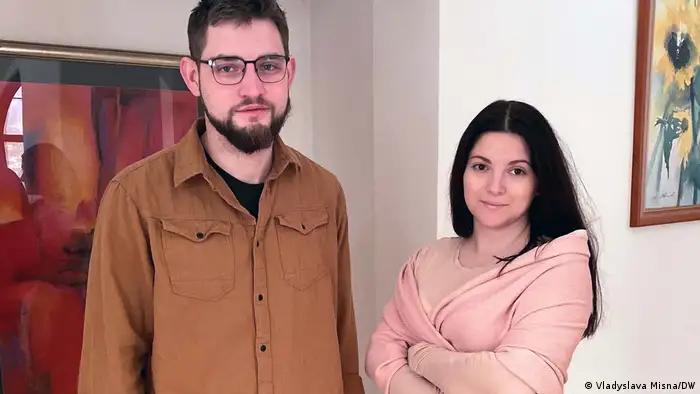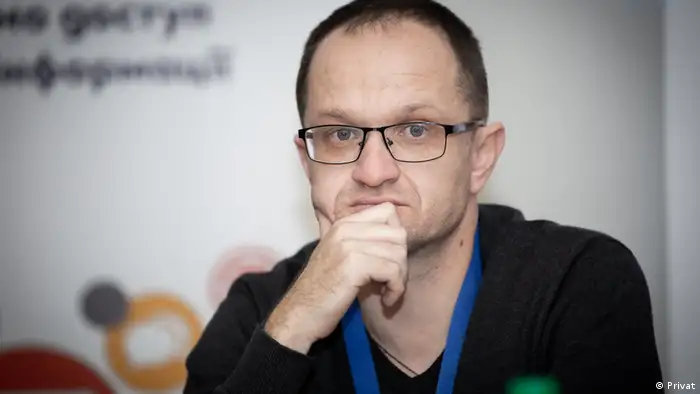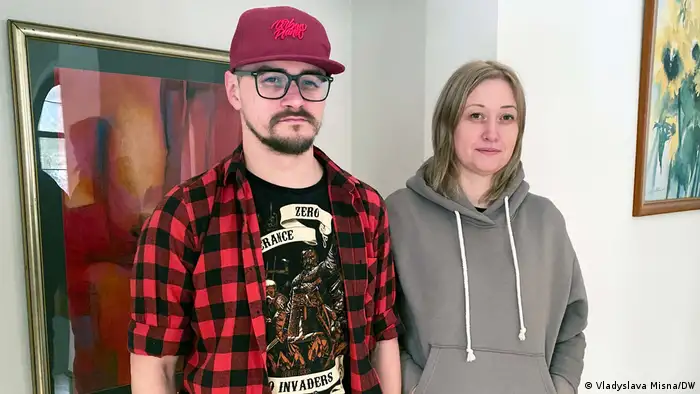Russia’s invasion of Ukraine, a year on now, changed all media – local, regional, national and international – working in the country. Amid the invasion’s initial shock, organizations in and outside Ukraine had to respond swiftly to an ever-changing situation on the ground. For DW Akademie, this meant adapting previous projects and adjusting to new priorities aimed at keeping journalists and media houses alive.
Before and after the invasion
DW Akademie has been working in Ukraine since 2014. With support from the German Federal Ministry for Economic Cooperation and Development (BMZ), DW Akademie has provided training and funding for media and media workers.
In 2021, the MediaFit programwas founded with Canal France International and the Lithuanian public broadcaster LRT. Along with supporting Ukraine's public broadcaster UA:PBC, MediaFit's goal was to fight disinformation in predominantly Russian-speaking regions in Ukraine’s southern and eastern regions by supporting media outlets in these target regions.
Following the second invasion, the goal remained yet the approach has changed. It was no longer enough to only support media, but media workers as well.
"The journalists had to survive and had to report on the situation," said MediaFit program director Hélène Champagne. "The whole world was relying on factual regional information."
The European Union, a MediaFit funder, responded quickly and by March, they had provided funds for regional media workers. Through local partners, it provided emergency relocation support, while coordinating editorial teams whenever a journalist or editor needed to go to the front.
-
MediaFit: Keeping media viable in Ukraine one year after the Russian invasion
Supporting media across Ukraine
More than forty regional media outlets from across Ukraine gathered in Poland for the first in-person event since the outbreak of COVID-19 and the Russian invasion. They reflected on their challenges and worked on skills for personal and media resilience.
-
MediaFit: Keeping media viable in Ukraine one year after the Russian invasion
Eastern Variant (Luhansk)
"We stayed alive, managed to evacuate the whole team and employ two new journalists from Mariupol who lost their jobs. We fundraised for the team reallocation and were not afraid of the challenges we came across. We now feel strong enough to share with others our experience and expertise in broadcasting in occupied territories, digital security, social media strategies and storytelling."
-
MediaFit: Keeping media viable in Ukraine one year after the Russian invasion
Kramatorsk Post (Kramatorsk)
"Despite all the horrors that the war brought to our country, surprisingly 2022 was one of the most productive years in our history. Although there was a huge drop in our Ukrainian audience due to the regular blackouts, we are growing through our social media channels. An important project that we’re developing is an information hub for the Kramatorsk residents remaining in the front-line city."
-
MediaFit: Keeping media viable in Ukraine one year after the Russian invasion
Chas Chernihivsky (Chernihiv)
"Despite the difficulties, we are the only private media outlet in the region that not only survived, but also used the disastrous situation to develop. Over the past year, our audience has grown from 2-3.000 per day to 15-40.000. We are the only online media in the region that can produce 2-3 high-quality video stories and broadcasts per day."
-
MediaFit: Keeping media viable in Ukraine one year after the Russian invasion
Bilyaivka (Odesa region)
"We have significantly grown our audience and developed our profile with the content we produce: explanatory journalism, constructive journalism, human-interest stories, game formats, historical texts, events. We survived this terrible year, saved our media outlet and maintained sources of income. Thank you for MediaFit support. And we hope that we will continue to collaborate."
-
MediaFit: Keeping media viable in Ukraine one year after the Russian invasion
Intent.Press (Odesa)
"Since the invasion, we have upgraded our company’s branding and editorial line. Apart from that, we have developed a new communication strategy which will help us reach out to our target audiences, which now cover not only Odesa, but Mykolaiv and Kherson regions as well. Over the past year, the site was visited by over 1 million users and we have been able to keep the whole team."
-
MediaFit: Keeping media viable in Ukraine one year after the Russian invasion
Cucr (Sumy)
"We were forced to turn our outlet from slow media into a high-functioning newsroom, which can provide and distribute information during wartime. We’ve started to produce podcasts on a regular basis and even launched a themed podcast. We also published a military special issue magazine in January."
-
MediaFit: Keeping media viable in Ukraine one year after the Russian invasion
Vgoru (Kherson)
"The biggest challenge for us last year was to keep the team alive and physically and psychologically healthy. And we succeeded. During the past year, we regularly created photo stories from occupied and, later, liberated Kherson. We shared these photos with all-Ukrainian and foreign media, thus many people throughout Ukraine and the world learned about the situation in the city."
-
MediaFit: Keeping media viable in Ukraine one year after the Russian invasion
Vchasno (Donetsk)
"In 2022, we managed to save our team and workplaces and were able to evacuate part of the editorial office yet provide conditions to keep working. Thanks to this, the site did not go down even for a day. Our audience has increased dramatically and we introduced a new Telegram channel. Due to MediaFit support, we were able to develop a new website, the old one suffered from Russian DDOS attacks."
-
MediaFit: Keeping media viable in Ukraine one year after the Russian invasion
Realnaya Gazeta (Luhansk)
"Thanks to MediaFit support, we developed a sustainability plan for the newsroom and were successful in sticking to it. Our YouTube channel audience has quadrupled in a year due to new formats – explainers and digests. We’ve completely upgraded our website and developed the Ukrainian language page to increase our audience in Kyiv, Dnipro, Lviv and Zaporizhzhia."
-
MediaFit: Keeping media viable in Ukraine one year after the Russian invasion
Primorka.City (Berdyansk)
"In 2022, the editorial office had two goals: to survive and acquire full independence (we were part of another project), and we've started our path to independence. We also launched “Free News," an organization bringing together mass media and protection of journalists’ rights. Despite the ban of our media in Russian-occupied Berdyansk, we have been able to maintain our audience."
-
MediaFit: Keeping media viable in Ukraine one year after the Russian invasion
Lyuk Media (Kharkiv)
"We’ve received two special offers from international organizations because of our strength in telling human stories. We’re also developing a series of eight products about cultural colonization and city marking (toponymy and names of the streets and theaters). And we’ve developed our strategies, including content direction."
-
MediaFit: Keeping media viable in Ukraine one year after the Russian invasion
Pershyi Kryvorizkyi (Kryvyi Rih)
"Through MediaFit, we’ve formed a media development strategy and analyzed our strengths and – more importantly – our weaknesses. We were able to launch the Ukrainian language version of our website and our newsroom can now work autonomously during blackouts. We’ve provided the team with protective gear, allowing them to work in the de-occupied territories to tell residents' stories."
-
MediaFit: Keeping media viable in Ukraine one year after the Russian invasion
Mykolaiv Centre for Investigative Journalism (Mykolaiv)
"It was a very difficult year and it is hard to remember something positive. In 2022, we set only one goal: To survive. Our city is one of the most affected cities in Ukraine. Yet there is something positive: We have new and increased support from donor organizations. In addition, there was growth on our social networks and we established a successful TikTok account to reach younger audiences."
-
MediaFit: Keeping media viable in Ukraine one year after the Russian invasion
Nakypilo (Kharkiv)
"In October 2022, our online radio and its website were relaunched, reaching approx. 2,600 unique listeners per month. In December, we launched an FM radio station. We also fully opened a press center and formed a team, while a new educational center is currently in development and is preparing new projects to support other journalists from the region."
Author: Yulia Alekseeva
The MediaFit project has expanded since the invasion, with 42 organizations now receiving grants, consulting and trainings. Moreover, DW Akademie is now encouraging Russian-language outlets in the south and east to cover news in both Ukrainian and Russian, providing much-needed information about these regions for the entire country.
"We are supporting Ukrainian media for all Ukrainians," said project officer Yulia Alekseeva.
Keeping media viable
Yet trying to bridge the gap across languages only works if media houses keep working. In the Russian-occupied regions, more than 100 regional media outlets have had to suspend their work. According to the Committee to Protect Journalists, at least 12 journalists have been killed.
Beyond the physical dangers, close to 75 percent of Ukrainian media outlets across the country lack sufficient funds, while a quarter of local journalists are going without pay, reports the National Union of Journalists of Ukraine. And, as the war continues, the problems multiply.
"There are two periods of the war so far," DW Akademie program director for Ukraine Kyryl Savin explained. "There was March to August, then September to today, where the energy infrastructure is under attack and internet supply has become unreliable."
In response, DW Akademie has been helping newsrooms get power banks that provide up to ten hours of battery life, along with Starlink connections to support internet connectivity. They can now continue their work and DW Akademie can still hold online trainings, psychological support sessions and support higher education institutions.
The challenges to come
Yet the question remains, what will the media landscape look like after the war?
As the country struggles with maintaining its infrastructure, messenger services like Telegram and Viber have become reliable lifelines, allowing access to information with very little bandwidth required. Some of these channels have millions of followers and can function in complete anonymity, for better or worse. DW Akademie's partners are succeeding on these platforms as well. Yet, Savin explained, many times the most popular messenger app channels are the ones rife with disinformation and poor journalistic practices.
While these messenger services have expanded access, the war has been the catalyst for new national restrictions. Far-reaching laws on publishing and government-mandated content have been passed for the sake of national security. Yet potential concerns over a postwar media remain in the background, overshadowed by the ever-changing battlefront.
Throughout it all, DW Akademie and their partners are committed to local and regional media, equipping both to provide Ukrainians with factual, high-quality information through these difficult times, and those to come.

